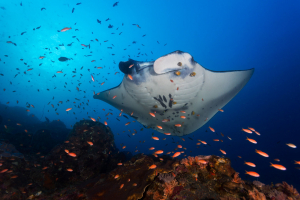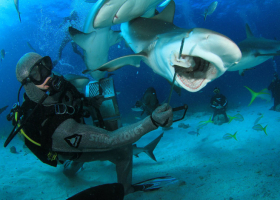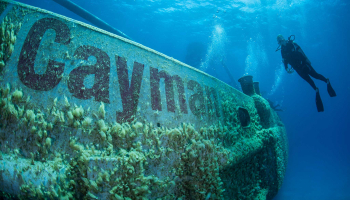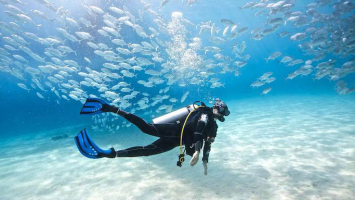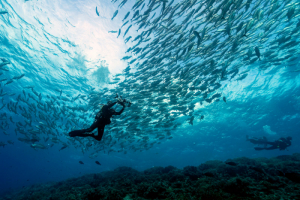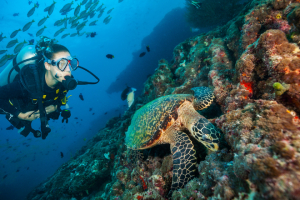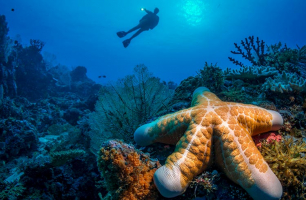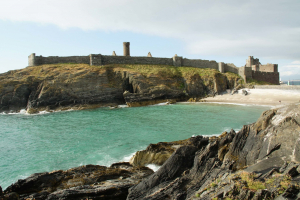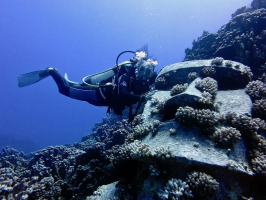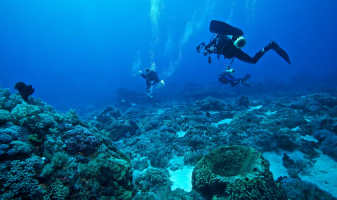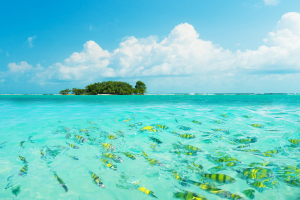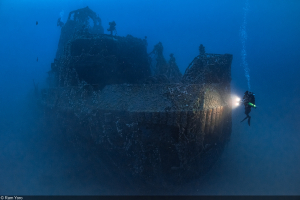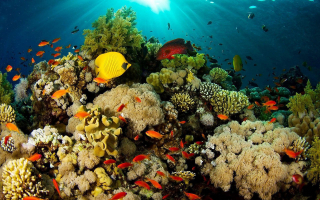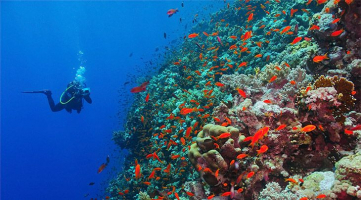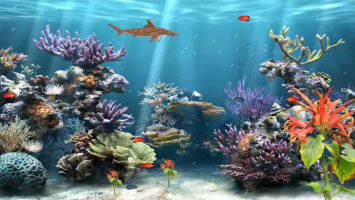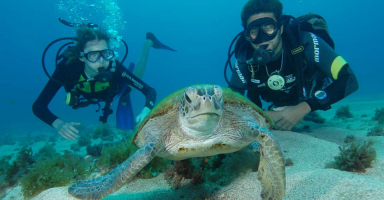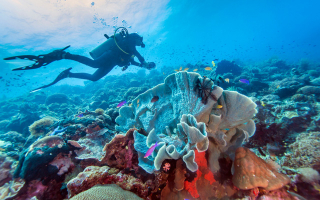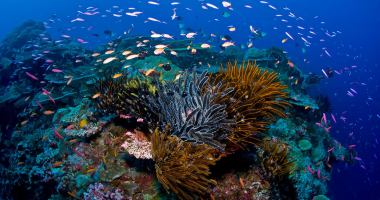Top 7 Dive Sites in The Isle of Man
The Islands, with their diverse marine life, provide excellent diving opportunities. The waters are crystal clear and support thriving plant and animal ... read more...communities. Here are the best dive sites in the Isle of Man.
-
The Burroo, with its incredibly diverse and abundant marine life, is truly one of the most spectacular dive sites in the Isle of Man. In fact, so abundant is the life here that finding a single square centimetre of bare bedrock in areas exposed to the fast flow is a challenge. It is consistently rated as one of the best in the British Isles by experienced divers, underwater photographers, and marine biologists.
Aside from the underwater landscape, the area is home to a variety of fish species and other marine life. Burro is unique due to its enthralling gullies and diverse marine life. It's as if someone has placed furry white-polystyrene mini Henry Moore sculptures among the rocks. The Burroo's tidal streams are among the most dangerous on the Isle of Man. Overfalls, up currents, and eddies are all too common. As the sea plies tumultuously, animals living in this environment receive a deluge of suspended, planktonic organisms from the passing water.
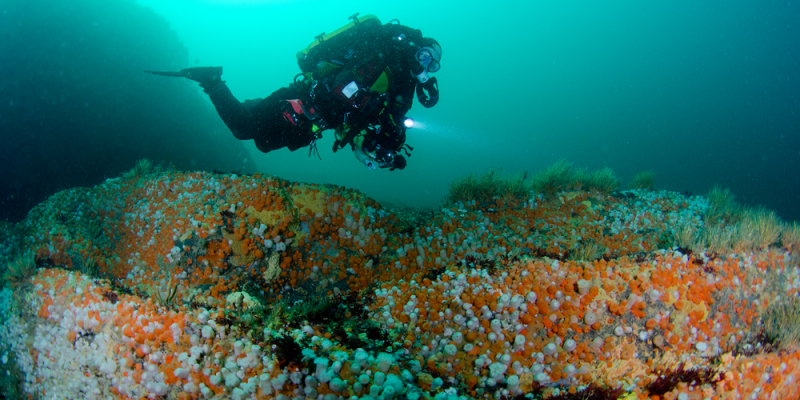
myscubadivinggearguide.com 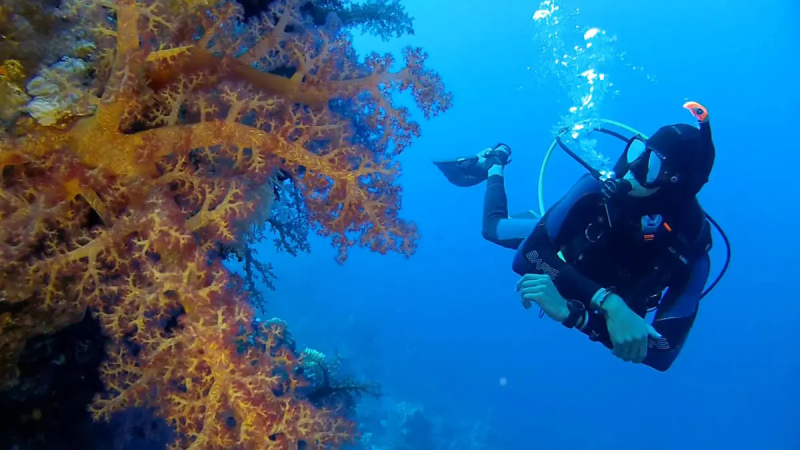
deeperblue.com -
Port Erin, once a sleepy fishing village, is still a popular destination for vacationers seeking a sandy beach, breathtaking scenery, spectacular sunsets over the bay, and, above all, the undersea world. On a low tide, the old T-blocks create a very sheltered bay, as the old outer breakwater lies ruined beneath the water. One of the main reasons why many Open Water divers begin their new adventure here is because of this. Except for the W to SW winds, which can reduce visibility, Port Erin's local dive, affectionately known as crab row, is protected from most weather.
In Port Erin, you can see conger eels, cuckoo, as well as plenty of tompots hiding in the holes. This site comes alive at night with squat lobsters feeding along the seabed, and if you're lucky, you might see a few small bright orange octopus. However, you should be cautious when diving because there is a lot of fishing line on the seabed that you should avoid touching because there may be fish hooks caught in the line waiting to snag a passing diver. This is unquestionably one of the most beautiful dive sites in the Isle of Man.
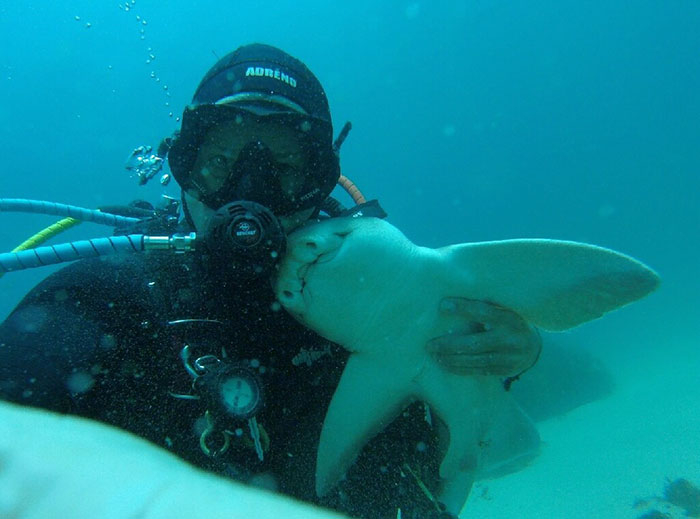
boredpanda.com 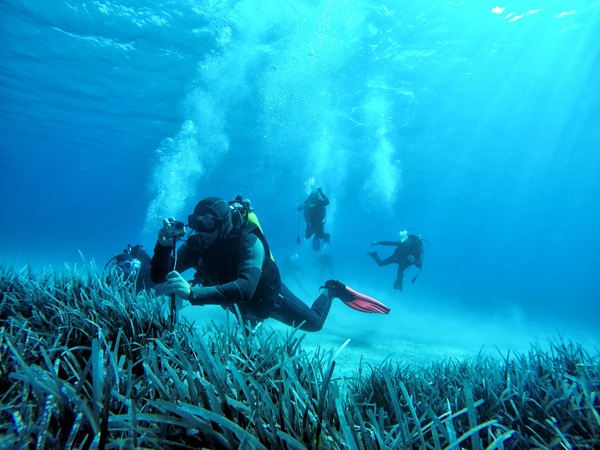
timeenough.im -
The Sugarloaf Caves on the Isle of Man, one of the best dive sites in the Isle of Man, is located just around the corner from Port St Mary. It is an excellent diving site for divers of all levels. The caves can only be reached by boat, but they're only a short distance from Port Erin or Port St Mary. Above the water, the Sugarloaf Caves are spectacular, steep, and rocky cliffs, and beneath the waves, rugged coastal cliffs give way to impressive sea walls and caves.
You can see hydroids, sponges, and anemones on the walls if you use torches in Sugarloaf Caves. Because of this, some anemones, sponges, and barnacles are stacked on top of one another, vying for space! Then you'll make your way into the deep Cave of the Birds, which is home to a few friendly seals who are known to follow and play with you all the way back to the boat.
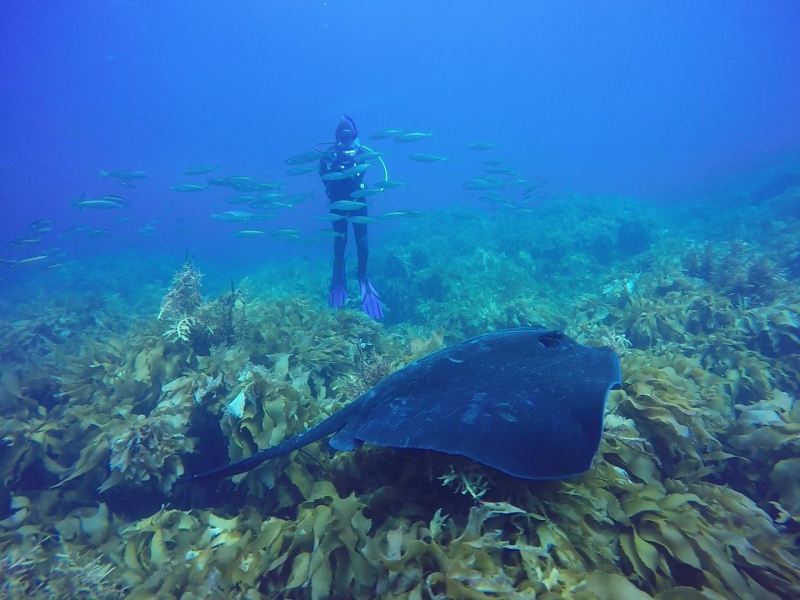
padi.com 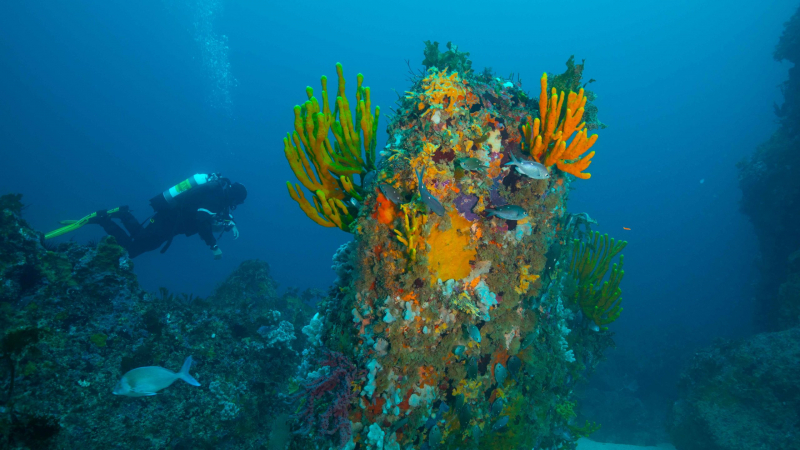
scubadivermag.com -
As you dive around the castle grounds in depths up to 10 meters, Peel Castle provides a fantastic backdrop for diving. There is no need to return because it is a loop, so you can spend the entire dive exploring new areas. You'll pass through a variety of backdrops on your way around the Castle to Fenella Beach, starting with a Kelp Forest, then a few caves, and finally around the corner to the rocky sides of the cliff face.
Fenella Beach is a short strip of sand that connects St Patrick’s Isle to the rest of the Isle of Man. Located in a small, sheltered cove, Fenella is popular for scuba diving. It is home to a number of playful Seals. You can spend an hour playing hide-and-seek with them and having them nibble on your fins. Following the rocks out in a straight line on the south side of Fenella Beach makes for an easy dive. There are a number of rock channels in the area that are great for exploring.
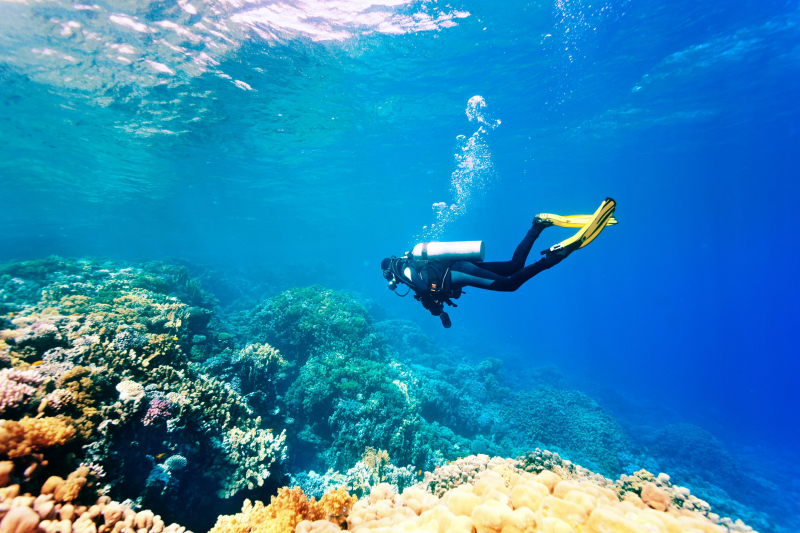
checkyeti.com 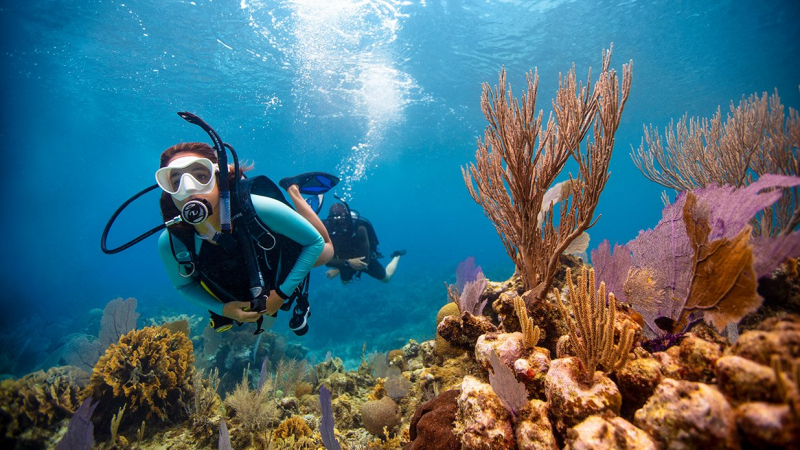
padi.com -
The Iron Pier extends from Ramsey Beach in the north of the island, with a maximum depth of about 14 meters at high tide. Following along the base of the Iron Pier, in and out of the under-water structure, you'll find a plethora of marine life congregating under the relatively safe shelter of the pier.
At the end of the Pier, head north for a few minutes until you reach the Dolphin. Much of the structure has collapsed, making it a fantastic dive with plenty of nooks and crannies to poke your head under. Again, a plethora of marine life calls this place home, including at least four resident Conger Eels, a plethora of Lobsters, and the incredibly charismatic Tompot Blennies. The Tompot Blennies, which can be seen poking their heads out of the cracks and crevices, are extremely curious fish that frequently pop out to take a closer look at the passing diver.
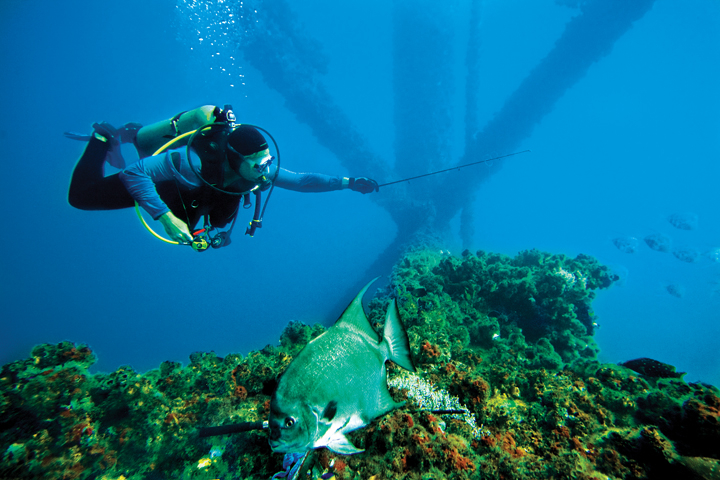
texashighways.com 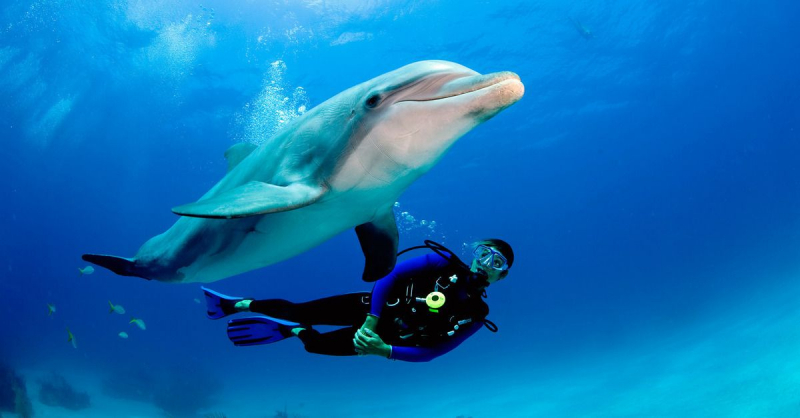
pinterest.com -
The Glendun, a Belfast steamer, ran aground in 1940. It is located on the east coast of the Isle of Man, just south of Maughold Head, and is only accessible by boat. This dive provides some spectacular views for the journey there and any surface intervals - which can be spent sunning yourself on the nearby private beach. The boiler is the focal point of this dive, and the top of it can be seen from above the surface.
When swimming right next to the structure, which rises 8 meters into the water, it appears massive. Swim down into any of the three boiler casings for some amazing photos. The vast majority of the Glendun has been dismantled and scattered throughout the area. This can turn the dive into a fun hunt, scavenge, and rummage as divers scatter in all directions looking for bits and pieces of gleaming brass. The wreck of the Glendun is a good, easy, scenic dive with a maximum depth of around 12 meters and close proximity to the cliffs. Just like a stroll on a Sunday afternoon.
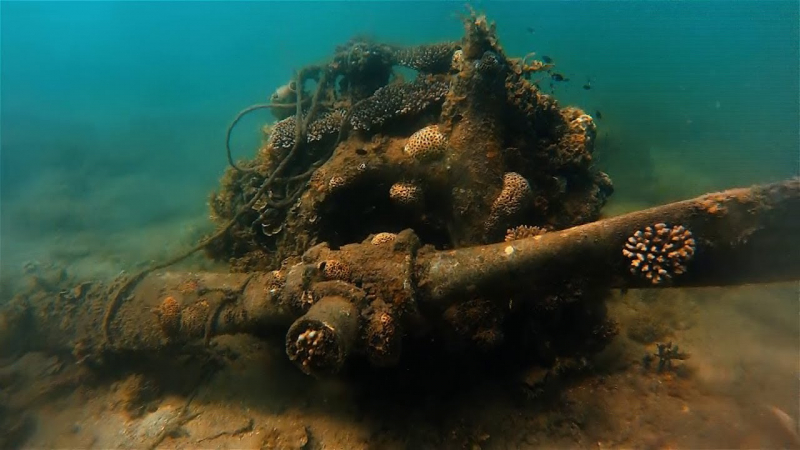
youtube.com 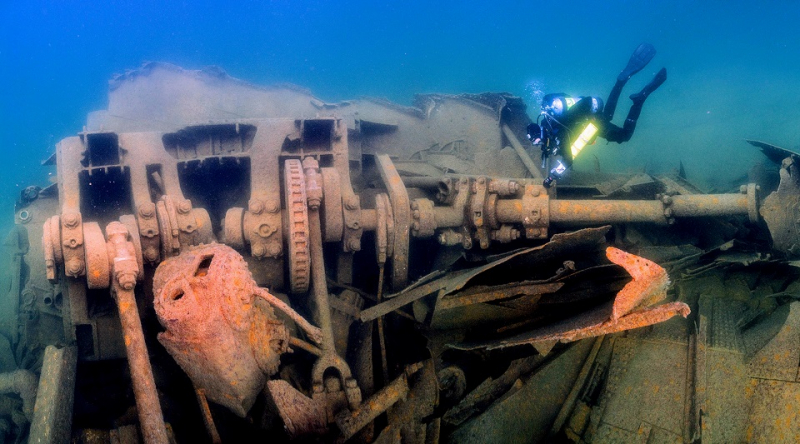
nps.gov -
A seal sanctuary The Cletts, one of the best dive sites in the Isle of Man, provide excellent views for relaxing and swimming. The wreck of the Darro is nearby. A small steamship that ran aground in 1901 while transporting coal. The boiler is only 6-8 metres below the surface, but the majority of the wreck is covered in kelp. Seal interactions are common in this area, but keep in mind that they can be extremely protective of children.
If you're just looking for seal interactions, the best way to do this dive is to decend and hold on to the kelp at around 4/5 meters deep. The seals are naturally inquisitive and will happily come closer to inspect you if given enough time, but keep your distance. Although the animals appear to be as cuddly as dogs, keep in mind that they are wild and extremely unpredictable. Please avoid grabbing, touching, or chasing them, and always allow them to come to you. Seals frequently attack when provoked. Because the currents here can be quite strong, the best times to visit the seals are usually around slack tide.
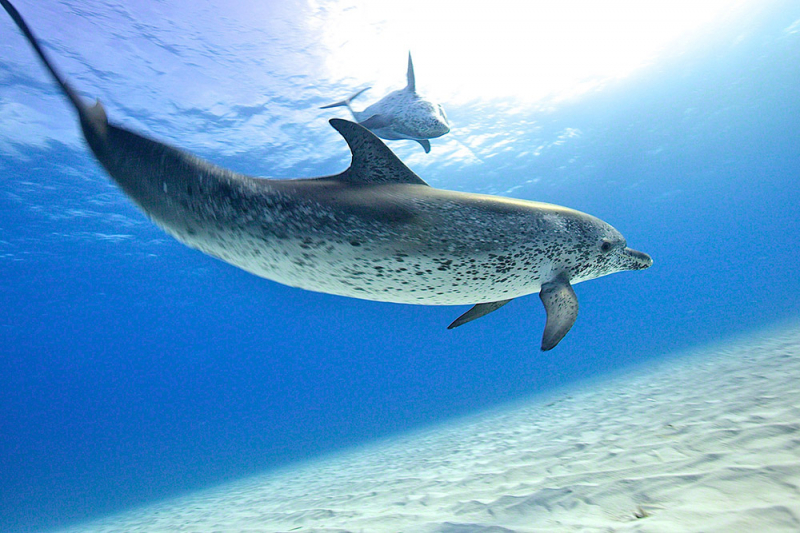
wildquest.com 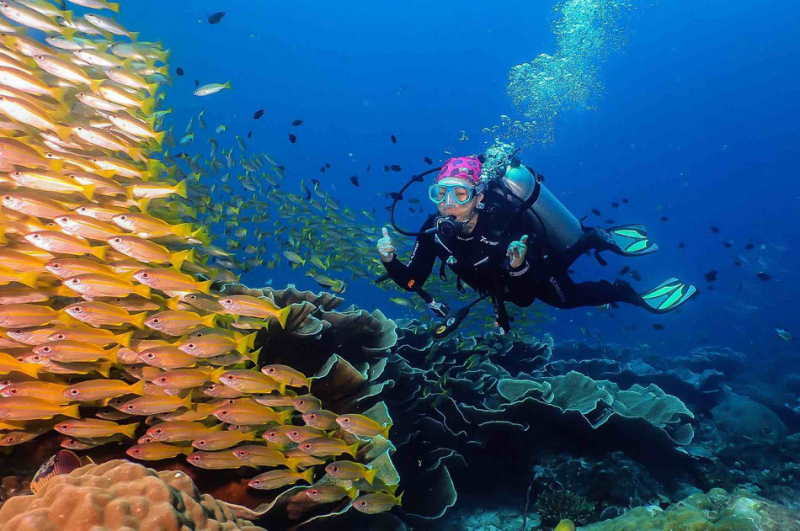
scubadiver.com










